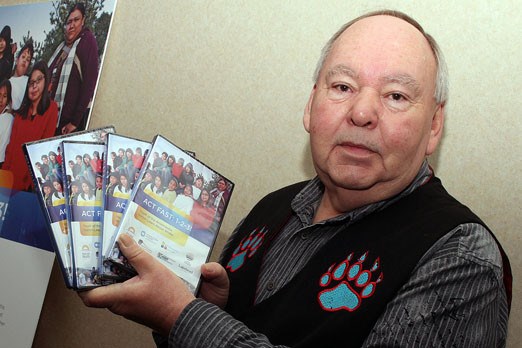Heather Coulson says if a stroke awareness aimed at Aboriginal youth saves even one life, then it was well worth the effort.
Coulson, a liaison with KO Telemedicine network, on Wednesday said the 12-minute video was made for children to support families in Northern communities, where diabetes and other afflictions vastly increase the risk of heart attack and stroke.
“Communities are special,” Coulson said. “It’s different than being in cities like Toronto or Thunder Bay or Winnipeg, because you don’t have a first response team, in lots of cases. You don’t have a hospital and you don’t have an ambulance, so what do you do?
“The video … tells the children what to do, who to call and the signs to watch for, so it’s really important. And it builds that from early on.”
Just because Act Fast: 1-2-3! Is aimed at the younger generation doesn’t mean parents and grandparents can’t learn a thing or two from the video, which will be distributed in more than two dozen Northern communities.
“Lots of times you’ll ask an adult the same question (you ask a kid) and the adult will say, ‘I don’t know,’” Coulson said.
She added the project arose when adults and elders in Northern communities asked specifically to have stroke awareness taught to their children and grandchildren.
“It’s about being preventative, so what can we do to help the children so that they’re aware of what the issues are and how can they help their community in the moment."
Robert Fenton, chairman of the Aboriginal Advisory Committee for the Northwestern Ontario Regional Stroke Network, said the video was directed by the kids themselves, which should help other children relate to the message being delivered.
“They told us what they wanted to do, rather than us going there as adults telling them this is what you’ve got to do,” Fenton said.
“To see their enthusiasm and how they bought into it, I really enjoyed doing the DVD,” he said.
The project, Fenton added, arose through another DVD aimed at diabetes awareness that targeted Northern adults.
“They asked us to teach their children. They thought our youth needed to know about stroke and what to do about stroke,” he said.
“We found there were a lot of stroke victims in a lot of the communities and we’re hoping through teaching the youth that some of these stroke victims can get help faster. There are stroke victims in all the communities we visited.”
The video, put together by local filmmaker Paul Moralee, was produced in conjunction with the Thunder Bay Regional Health Sciences Centre, the Centre for Rural and Northern Health Research, Lakehead University and Keewaytinook Okimakanak, as well as the OSN and NORSN.
